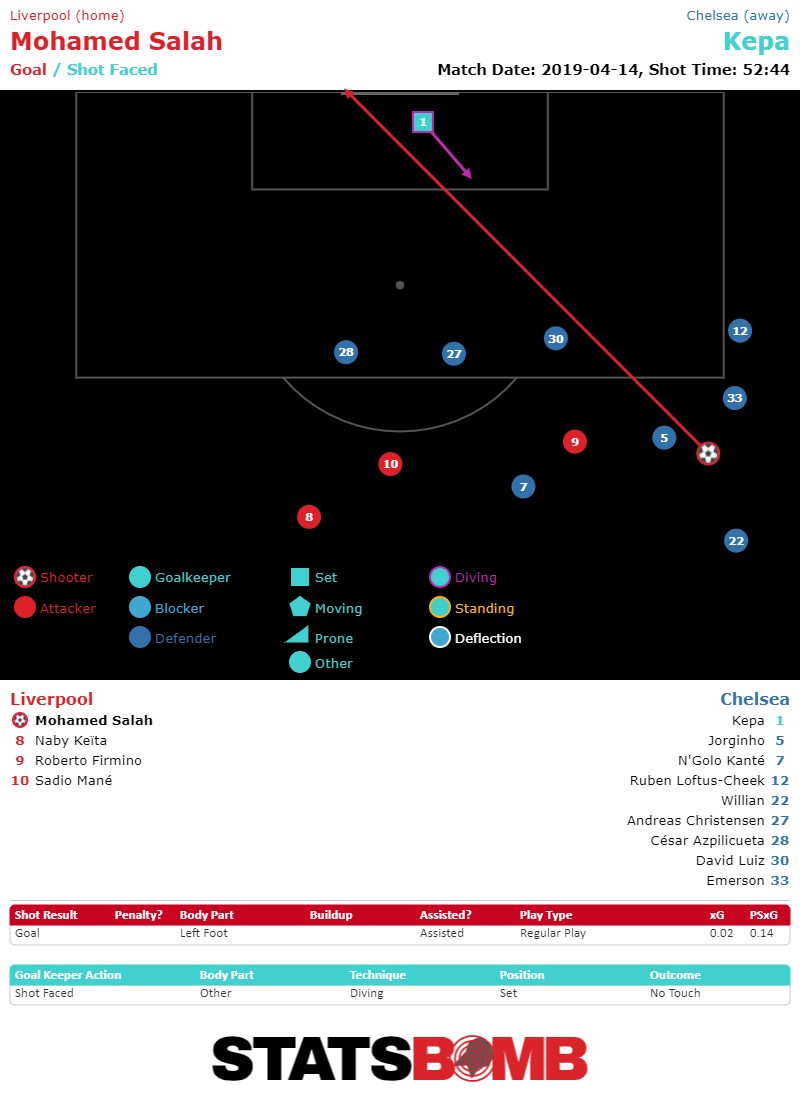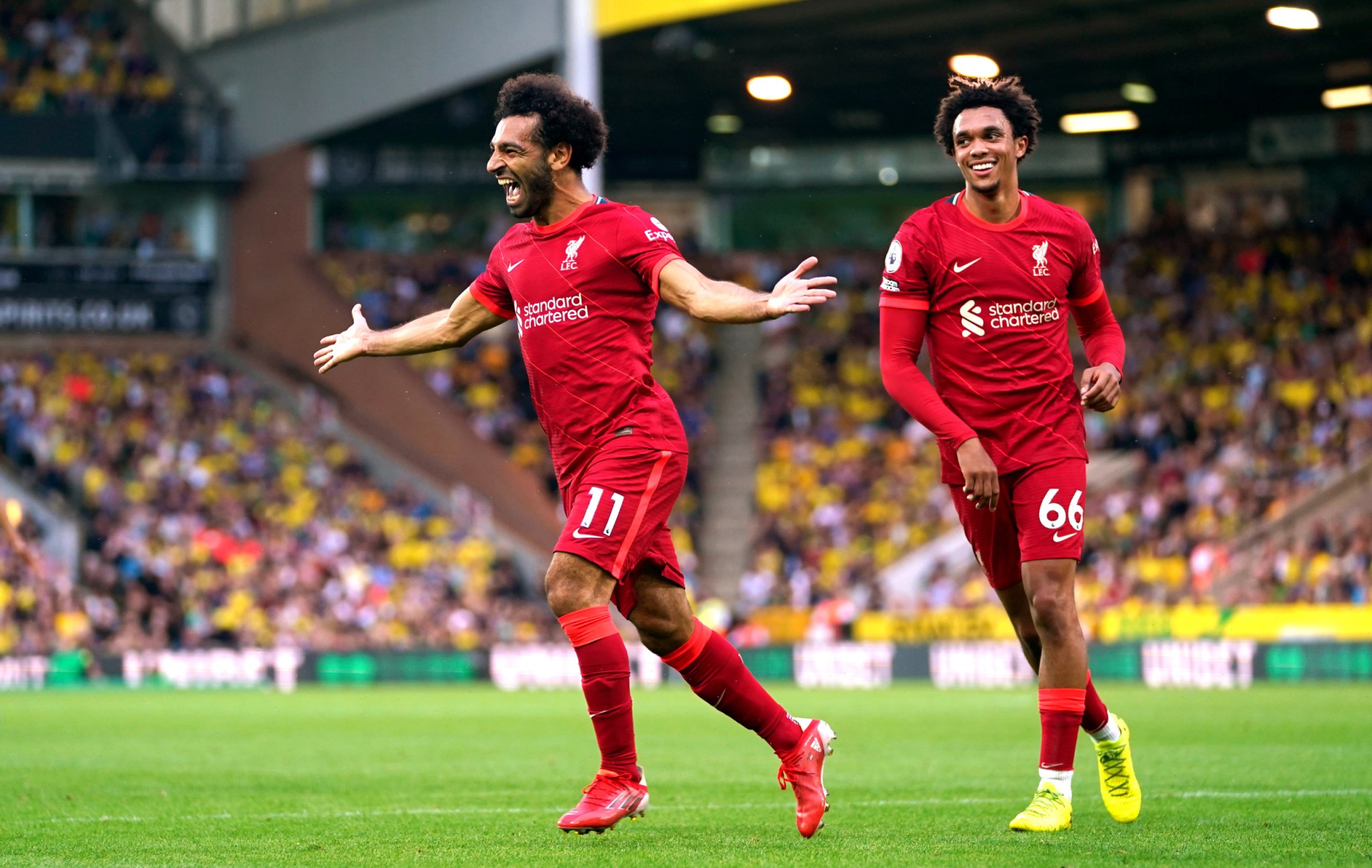As Liverpool built an attack just inside the Brentford half, Mohamed Salah lurked on the outside shoulder of the Brentford wingback. With a burst, it took just a couple of strides for him to reach top speed and separate himself from the defender, collecting a lofted through ball before finishing on his left foot past the goalkeeper. Salah’s 100th Premier League goal for Liverpool was an archetype we’ve seen work for him time and time again.
The description would fit a large portion of his Premier League century for the Reds. The century goal against Brentford means Salah now holds the fourth-fasted record for reaching 100 Premier League goals for a single club, getting there in just 151 games. That he’s behind only Alan Shearer, Harry Kane, and Sergio Agüero – players positioned far more centrally than the Egyptian wide forward – only adds to his achievement. It’s time to pay homage.
First, a look back on how he got here in the first place. On the back of a 15G+11A 2016/17 season with AS Roma, Salah’s transfer has been as plug-and-play as they come and surely one of the most successful transfers anywhere in the world in recent history. In case you need reminding of how that season looked analytically, here’s his radar and shot map from that season:
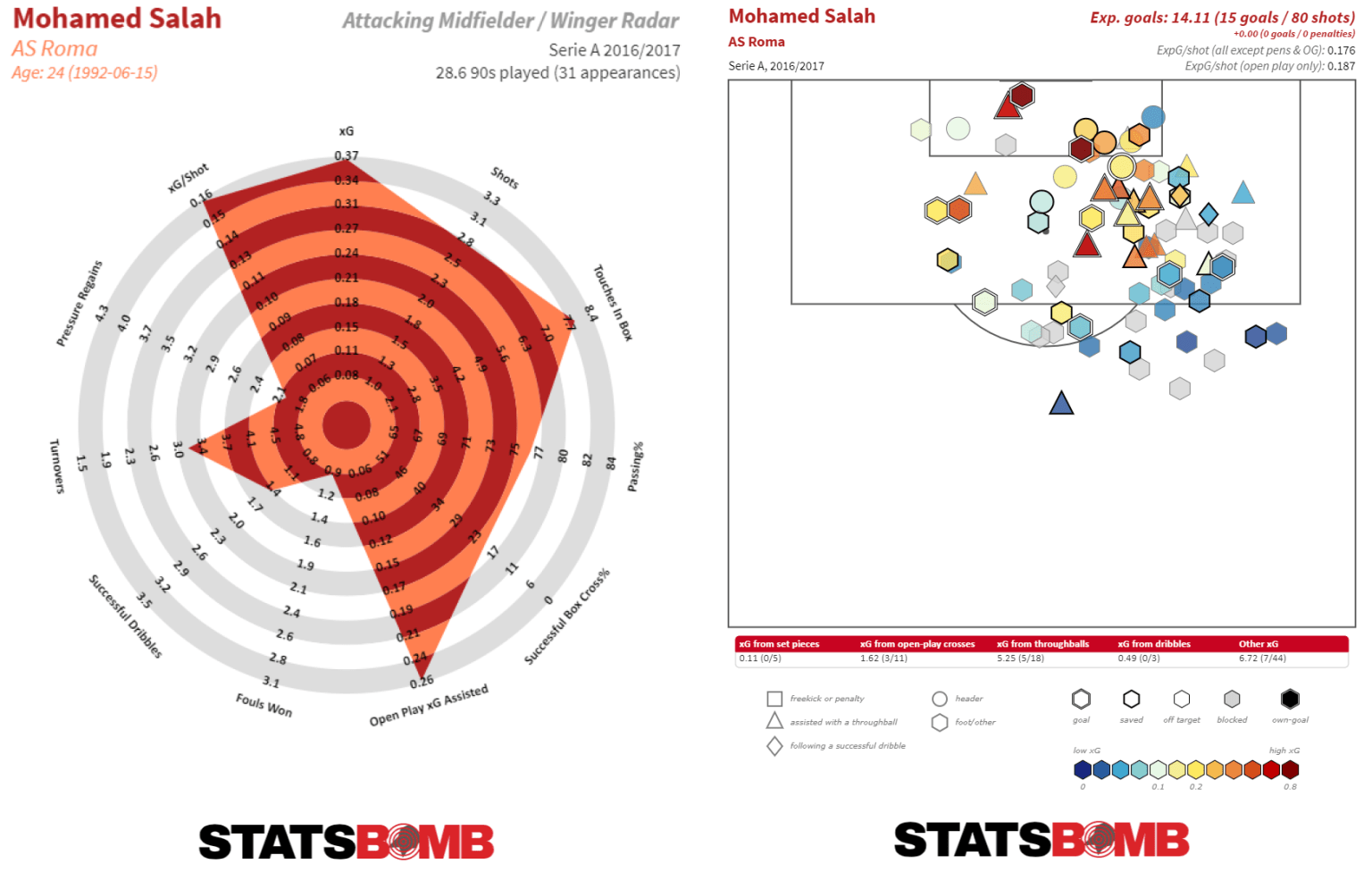
Some predicted that Salah’s previous spell at Chelsea and lack of impact in the Premier League at the age of 22 were enough cause to be cautious about the signing, but others called it perfectly (you’re welcome, James). Salah’s age (24), physical profile (lightning-quick), and pedigree (top performer on the 2nd-placed Serie A side) would set him up well to be at least a solid performer in a counter-attacking Jürgen Klopp system, the sharp money suggested. Liverpool obviously thought so too.
Salah lit it up in his first campaign on Merseyside, hitting the ground at a record-breaking pace and providing an instant return on the investment with a 32G+9A debut season. By December, he’d become the joint-second fastest player to reach 20 goals for Liverpool, and his 41 goal contributions in 2017/18 were second only to Lionel Messi in the goals+assists charts in the Big 5 European leagues. The Egyptian was a full six goal contributions clear of third-place Luis Suarez, who had the, let’s say benefit, of having Messi to create for him and return the favour. Even after season one, it was clear that the £37m fee was incredibly good value.
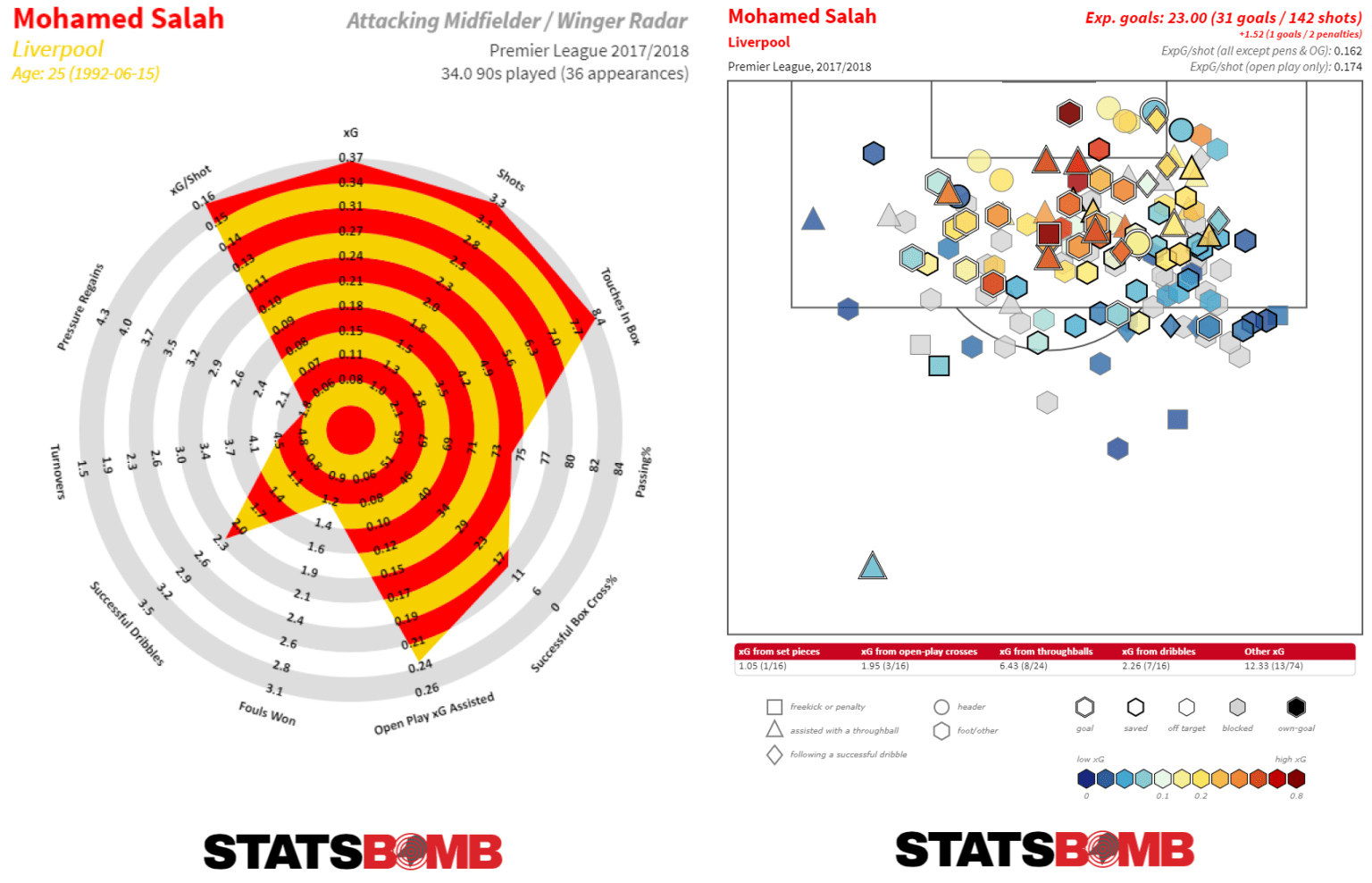
Salah’s first season was his best. His other seasons – which “only” returned 19G+8A, 16G+9A, and 16G+5A – were hardly bad Premier League campaigns either. Where his 2017/18 rate of contributing goals and assists was the best in a Lionel Messi-exclusive Europe, his latter contributions were “only” amongst the Premier League best.
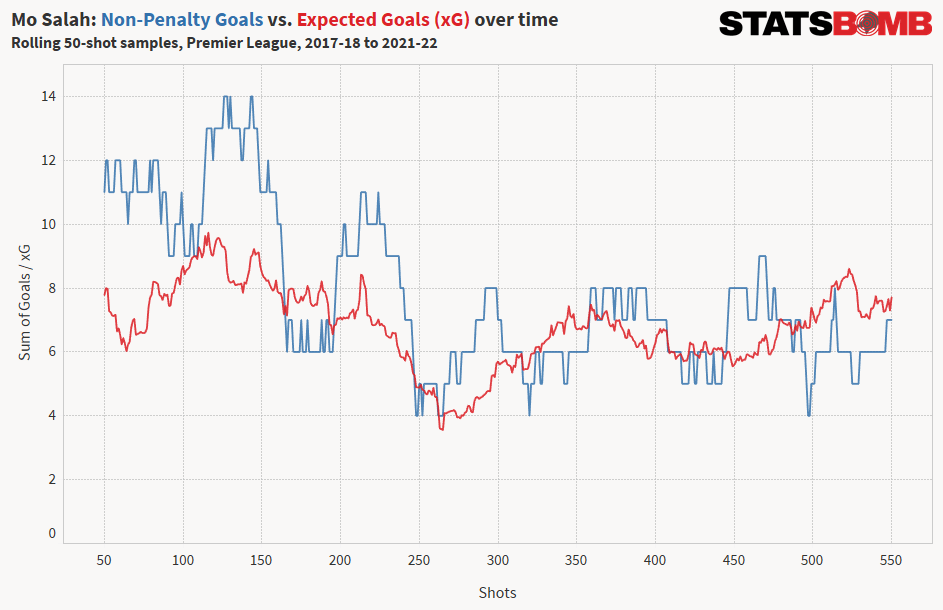
While always considered a consistent Premier League performer – and what I’m about to say doesn’t dispute that – Salah did suffer from dips in form as any player does. In the latter end of the 2018/19 season, he went 25 shots without scoring a goal (seen around the 250-shot mark in the above graphic), a drought which James Yorke analysed here.
But even when suffering from a (relative) dry goalscoring spell, he remained on the pitch. That often-overlooked quality is another attribute that elevates Salah into one of the all-time great Premier League goalscorers: his ability to stay fit and play minutes. The consistency with which he’s delivered is as much about his talent for getting on the end of chances in good positions as it is his ability to be on the pitch in the first place. Salah has contributed a minimum of 3000 Premier League minutes in every season since he moved to Liverpool, another factor that adds value to the investment made when signing him from Roma.
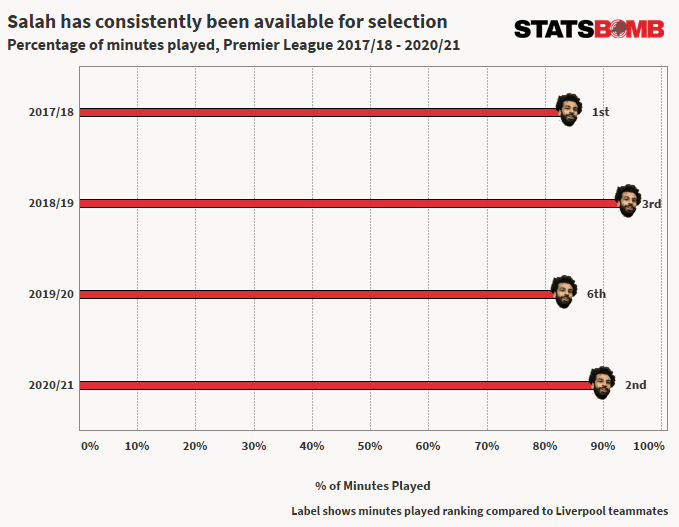
Ever since he moved to Liverpool, there’s been an inevitability about the wide-forward; his self-assured demeanour has always translated to decisive and unerring finishing when receiving in the final third, inside-right channel.
The quality of his finishing can be detected in the numbers. His ability to hit the target and place the ball in high-probability areas of the goal can be measured by his turning of 76.1 xG into 85.2 post-shot xG (a model that takes into account shot placement), a number that is also more reflective of Salah’s actual non-penalty goal number of 86.
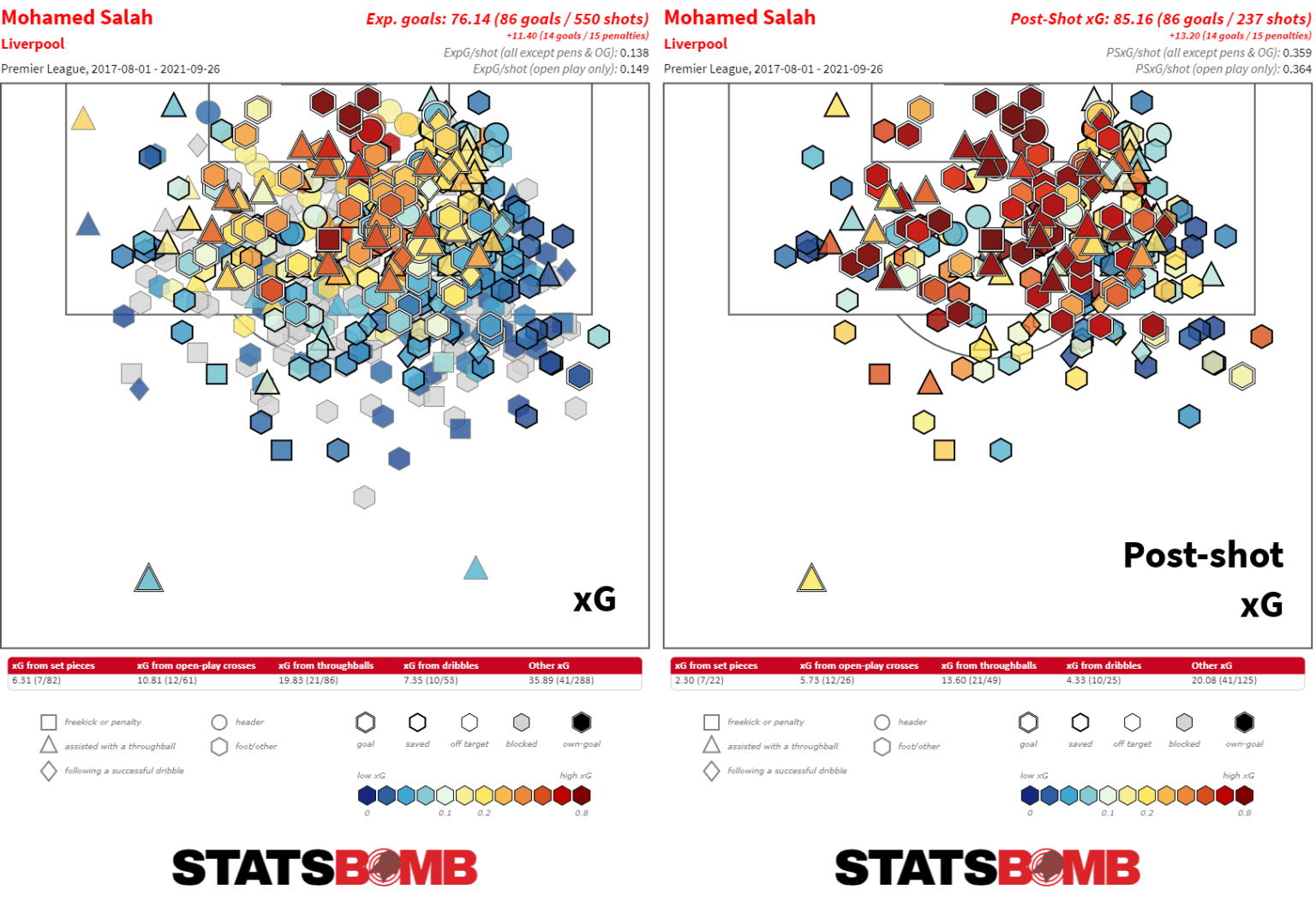
What also stands out from his all-time Liverpool shot map is that Salah scores all types of goals. He scores from crosses, and he scores from dribbles. He especially scores from throughballs. He can poach goals in the six-yard box, or beat the ‘keeper 1v1, or even curl one around the defender from 18 yards out. Ok, he doesn’t really score with his head, but can you imagine what Salah would be if he were 6’0” and dominant aerially? Premier League defenders have a tough enough time defending against him as it is.
Our new On-Ball Value model enables us to add even more context to his goalscoring and shooting numbers. OBV is a model that measures the value of each action that takes place on a football pitch, based on the size of impact the action has on a team’s chances of scoring or conceding. In the context of shots, OBV takes into account the value of the possession state at the moment the player is in possession and credits the player’s decision-making if he decides to take shots that increase the team’s likelihood of scoring from the possession state they were in, equally penalising players when they make poor shooting decisions. It also adds further credit if the player turned the shot xG into a higher-value post-shot xG. In summary, it rewards players who get possession in good positions and use those good positions well, and then adds further credit to those who finish well when shooting.
All of Salah’s seasons appear towards the top of the OBV from shots rankings in the last four seasons.
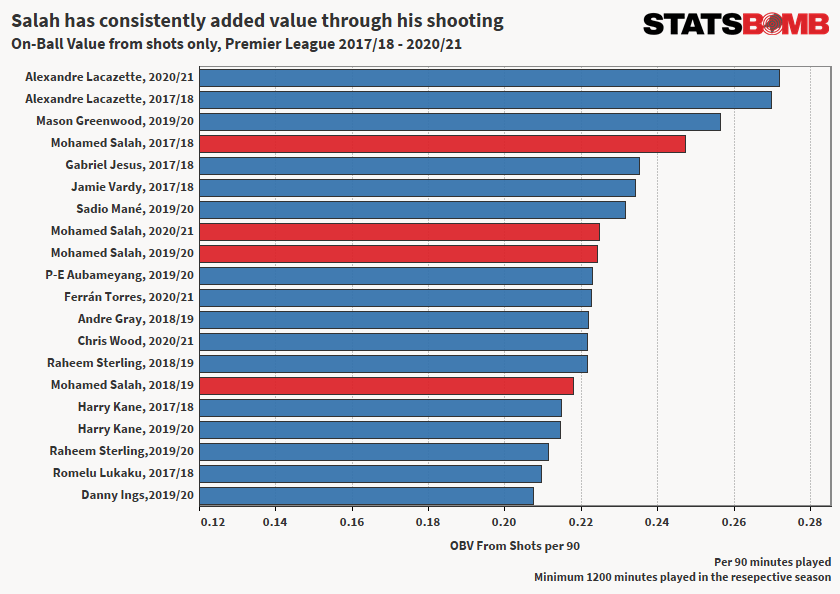
No Mohamed Salah evaluation would be complete without a look into his footedness. Left-footed attackers, and lefty players in general, are scarce in football and generally command a higher price point than their equivalent right-footed counterparts for the balance they can provide to an attack.
The assassin-like shooting off Salah’s left foot shows up in the data and justifies his penchant for shifting the ball onto his stronger foot more often than not. On his left, Salah’s netted 68 non-penalty goals from 57.3 xG, a near 11-goal overperformance. On his right, he’s underperformed to the tune of 1.6 goals, netting 12 non-penalty goals from 13.6 xG on his weaker foot.
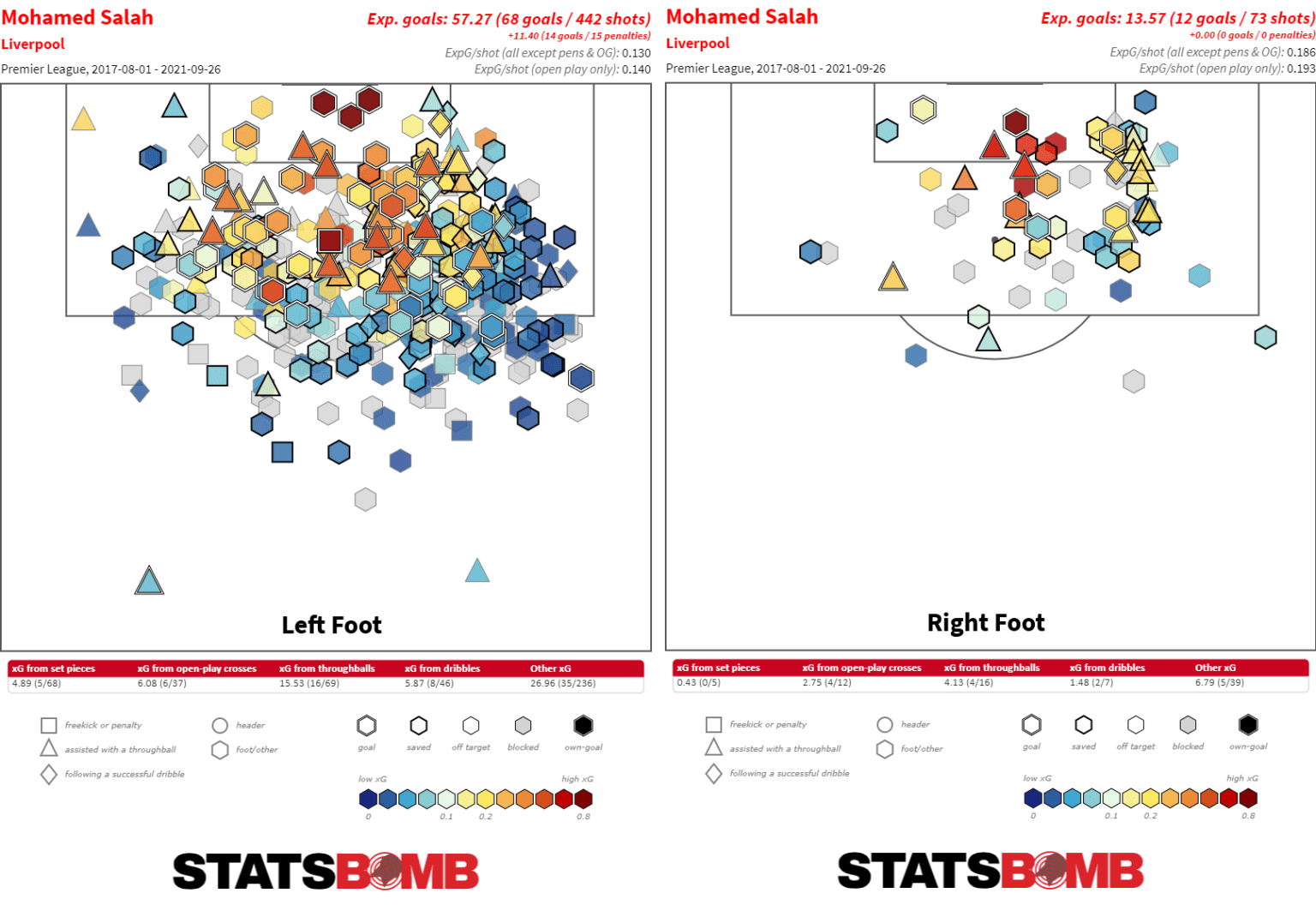
There’s another story underlying this, though. It could be argued that Salah has actually finished “well” on his weaker foot, and it’s just good goalkeeping that’s prevented him from having more goals from his right side. Salah’s post-shot xG on his right foot is 17.7 PSxG, up from the 13.6 standard xG, suggesting that the issue isn’t with his shot placement from his right. The argument also bears out in the rate his weaker foot shots hit the target: 45/73 of his right-footed attempts have hit the target, a 61% clip that is far, far above the league average shot on target rate for Premier League strikers. For context, he hits the target with ~40% of his left foot shots.
It could be the data’s not seeing something, of course, but to some degree all you can ask of one-footed players is that they hit the target and test the goalkeeper when attempting to score with their weak foot. Salah has evidently done that very well.
It’s 100 up for Salah as Liverpool fans look forward to worshiping their Egyptian King of the Kop for more seasons yet as their hero continues to hunt down those above him in the all-time Premier League goalscoring charts. There’s still plenty more value to be had from one of the best signings in Premier League history.
Addendum
Here’s the freeze frame from that goal vs. Manchester City. Yep, he’s too far out to be shown in the vis as it’s displayed in IQ.
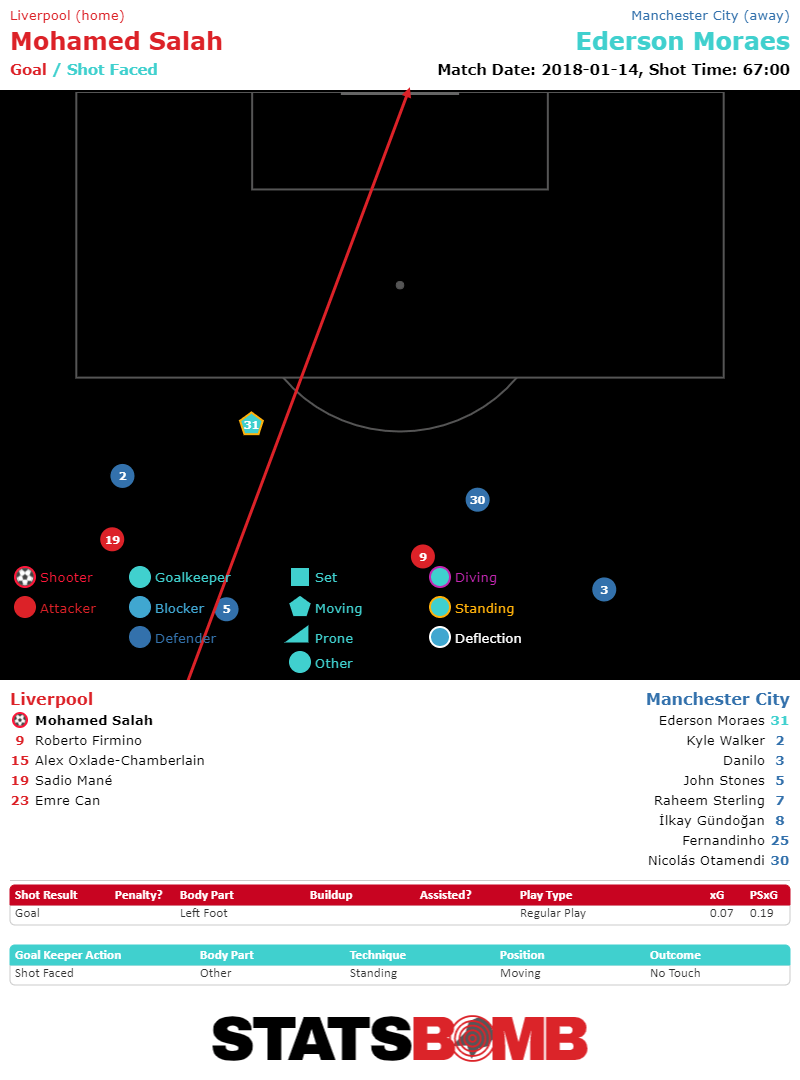
And here’s the freeze frame for the most unlikely, by xG, of Salah’s goals – the screamer vs. Chelsea in April 2019. 0.02 xG, a 1-in-50 shot.
